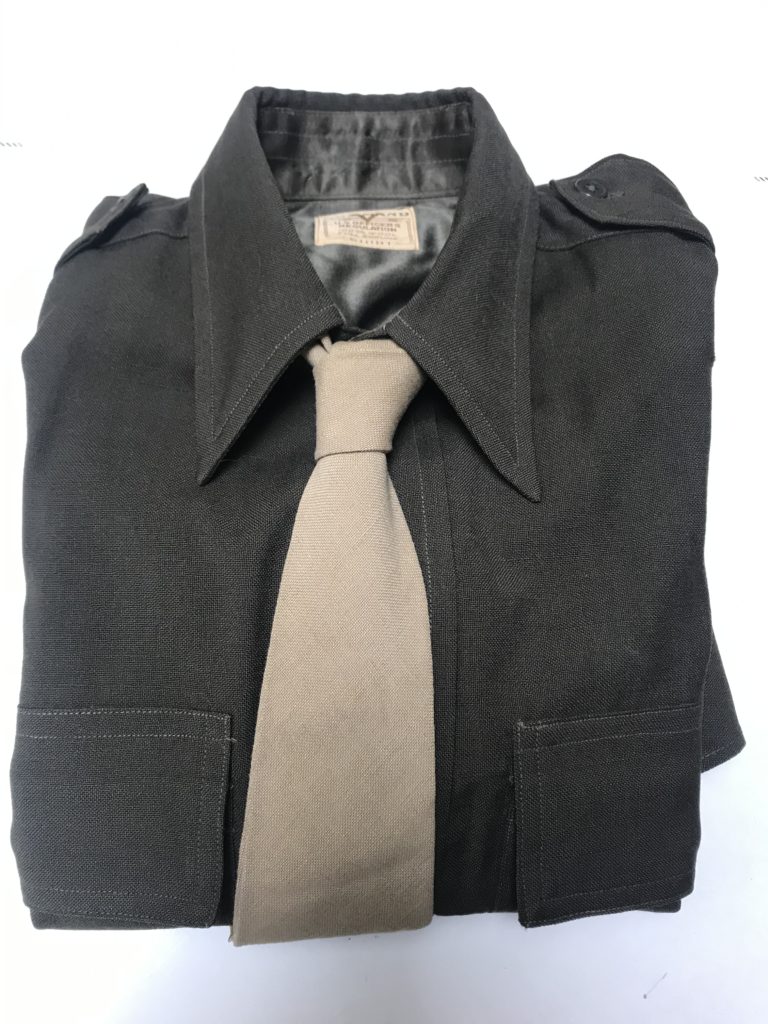
Whenever I pass a flea market or browse eBay, I look for old photograph albums. If I’m lucky enough to find one that contains written information about the people in the pictures — a full name, a date, an address — I buy the album and research it in hopes of returning it to family members. Sometimes, I hit nothing but dead ends, but more often than not, I’m able to send the album home to someone who will love it. I once sent someone his own long-lost baby pictures; another time, I found a WWII album full of photos of a young couple — a WAVE and a sailor — and sent it home to their daughter.
I never thought I’d ever find anything related to one of the people in my book.
Without spoiling anything, I think I can safely say that my book is partly about American airmen who were shot down over Nazi-occupied Europe during the Second World War. I’ve spent the last year reading hundreds of Escape & Evasion Reports filed by airmen who avoided capture and returned to England.

One of the men I decided to include in my book as an example is 2nd. Lt. Joseph E. Wemheuer. There were at least a dozen men I could have chosen to make the same point, but I went with Wemheuer for two reasons:
- The handwriting on his E&E report was marginally more legible than the usual chicken-scratch (do not underestimate the importance of this factor!).
- One of the waist gunners on Wemheuer’s B-17, Staff Sergeant Robert J. Vertefeuille, was from my hometown of Willimantic, Connecticut (perhaps not a very scientific reason, but it tipped the balance).
Joseph Wemheuer grew up in a German-speaking household in Chicago. His father, a German immigrant, played bass in the Chicago Symphony Orchestra. Before the war, Wemheuer graduated from St. Mary’s University in Minnesota and became a high school teacher. After Pearl Harbor, Wemheuer joined the United States Army Air Force and trained as a bombardier. He was shot down in France in May 1943.
I reached out to Joseph Wemheuer’s family using the same research process I use for my photo albums. His grandson was happy to have some of the documents I found during my research, and shared some of Wemheuer’s recollections of his experience in France with me.
Then something strange happened.
The same week I began corresponding with Joseph Wemheuer’s grandson, a surprising number of new hits started showing up on Google. Joseph Wemheuer — an ordinary B-17 bombardier who died in 1994 — had never had much of an internet presence, but now his name was popping up repeatedly.
It turns out that a collector was selling a large collection of Second World War aviation paraphernalia, including Joseph Wemheuer’s uniform, medals, insignia, and the bombardier’s log book he used in training. The auction was happening in Missouri at the end of the week.

Joseph Wemheuer’s Purple Heart 
Medals, Log Book, etc. 
Shirt and Tie
If I hadn’t gone looking for Wemheuer’s family that very week, I never would have noticed. Or worse — I would have gone looking the next week or next month and found the old auction listing and kicked myself forever. But that’s not what happened. After some quick emailing back and forth with Wemheuer’s grandson, I decided to bid on the lot and send it home if I could.
Auctions stress me out. I much prefer that “Buy It Now” button that lets you see the price and just pay it. This auction was especially nerve-wracking — I was going to bid online in a live auction happening in an outdoor tent halfway across the country. I slept badly, imagining every possible tech failure.
I need not have worried. There were other bidders, but Joseph Wemheuer’s lot ended up going for less than my budget. I was able to write back to his grandson and tell him that we won.
The items showed up on my doorstep a few weeks later. The tunic, shirt, tie, and hat are in marvelous condition. All Joseph Wemheuer’s medals are there — his Purple Heart, his Air Medal, his Victory Medal — along with his bombardier’s wings.

Of all the items in the box, the one that means the most to me is his “Caterpillar Club” pin. It is given to people who successfully parachute out of a disabled aircraft, which is where my book begins. More than that, my own grandmother was an inspector of parachute cord at a factory during the Second World War. Every time I read a story about an airman who reached the ground safely, I wonder whether he was one of hers.
Tomorrow, the box goes on its way to Joseph Wemheuer’s grandson. I hope I can share the rest of his story in my book someday.
